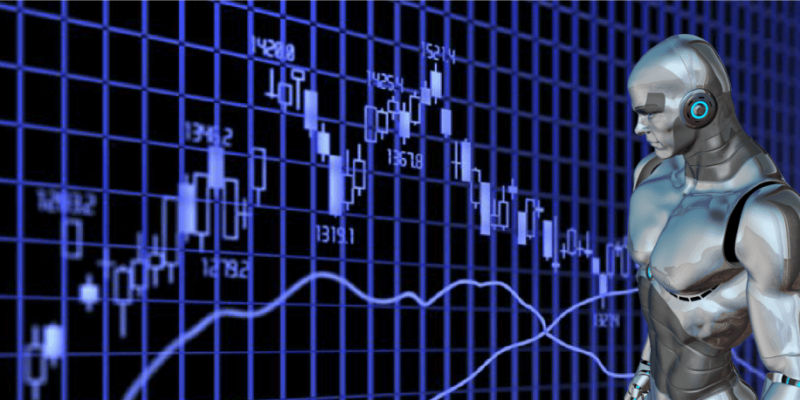
The rise of trading bots and algorithmic trading has led many investors to question whether automated or manual trading is most effective. Here we’ll analyze their relative pros and cons, assess use cases, and provide guidance on combining bot and human intelligence.
Benefits of Bot Trading
Speed and scalability – Bots can scan markets and react to opportunities in milliseconds, executing thousands of precise orders across assets. This speed and scale exceeds human capabilities.
24/7 execution – Algorithms trade continuously without rest, emotion, or distraction. Humans can only monitor markets and manage positions during waking hours.
Consistent strategy – Bots ruthlessly follow programmed tactics and rules. Humans are prone to fatigue, discretionary mistakes, and emotional biases.
Accessibility – User-friendly retail platforms like the best automated crypto trading platform empower novice traders to leverage bots. Coding skills are not required.
Downsides of Bots
Trading bots, while beneficial in many respects, come with their own set of challenges and limitations. Understanding these downsides is crucial for any trader considering their use.
Programming Limitations and Errors: Bots operate based on their programming, but flaws in their logic or unforeseen market conditions can lead to costly mistakes. Human traders, with their ability to discern ambiguities and nuances, often outperform bots in unpredictable market scenarios.
Vulnerabilities to System Failures: Bots are susceptible to technical glitches, including software crashes, exchange outages, and connectivity problems. These issues can abruptly halt trading activities. In contrast, human traders possess the adaptability to quickly respond and adjust to such disruptions.
Increased Security Risks: The use of bots introduces the risk of system compromise. If the system or credentials are hacked, it could lead to unauthorized access and control over bot trading. Human traders, with their personal oversight, offer stronger defenses against such security breaches.
Navigating Regulatory Uncertainties: The realm of trading bots is often clouded with regulatory uncertainties. As financial oversight evolves, it can introduce questions regarding the legality and optimal design of bots. Human traders are typically more adept at navigating these regulatory gray areas and adapting to legal changes.
The Merits of Manual Trading
On the other hand, manual trading, despite being more traditional, has several advantages that bots cannot replicate.
The Power of Human Intuition and Discretion: Human traders bring to the table their instincts, experience, and qualitative insights. These allow for discretionary judgments in trading that bots, lacking such subjective abilities, cannot make.
Flexibility and Focus Adjustment: Human traders can manually shift their focus and capital between different assets and strategies in response to market changes. Bots, in comparison, lack this degree of flexibility and dynamism.
Utilization of Nuanced Order Types: Experienced traders can strategically use advanced order types and understand market spreads in real-time, something bots are typically programmed to do in a more limited and predefined manner.
Enhanced Security Measures: Manual trading is devoid of the cyber risks associated with bot systems, such as the danger of hacking or hijacking. The trader’s logic and strategies remain confidential and internal.
Limitations Inherent in Manual Trading
However, manual trading isn’t without its drawbacks, which can affect the efficiency and effectiveness of trade execution.
Vulnerability to Human Fatigue: Unlike bots, human traders can suffer from exhaustion, distraction, or emotional volatility, especially over long trading sessions. This can lead to errors and suboptimal decision-making, whereas bots maintain a consistent focus and performance.
Slower Reaction Times: Humans cannot match the speed of bots, which can execute orders in microseconds to capitalize on fleeting market opportunities. This lack of speed can result in missed first-mover advantages.
Constraints on Scalability: Human traders face limitations in handling multiple streams of data, screens, and complex calculations simultaneously. Bots, on the other hand, can effortlessly scale and process vast amounts of information in real-time.
Challenges in Execution Efficiency: Manually entering and exiting positions often results in higher transaction costs, including slippage, spread costs, and commissions. Bots can execute these tasks with greater precision and efficiency, potentially reducing such overheads.
Complementary Strengths
The most effective trading likely combines bot and human intelligence. Algorithms efficiently implement tactics and automate mundane tasks, while people provide oversight, intuition, and high-level strategy changes.
Balancing automated strategies and processes with human insights and adaptation allows capitalizing on complementary strengths while mitigating standalone weaknesses of either approach.
Finding the Optimal Balance
The right bot/manual balance depends on individual skillsets, styles, and risk tolerance. No universally ideal ratio exists.
Those newer to trading may prefer more bot automation to codify profitable rules-based strategies. Experienced traders likely manual trade more selectively for bigger picture moves.
Regular monitoring and reskilling is imperative as markets, regulations, and bot capabilities rapidly evolve. Complementary bot/human trading necessitates an agile, lifelong learning mindset.
Conclusion
Bot and manual trading both offer advantages and disadvantages depending on context. Rather than a rigid either/or choice, investors should aim for thoughtful integration.
Ideally, algorithms handle grunt work like order execution, data monitoring, and basic analytics. Humans provide intuitive pattern recognition, qualitative insights, and strategic oversight.
By combining the speed and scale of bots with human judgement and adaptability, traders can maximize strengths while minimizing standalone weaknesses. The future likely lies in hybrid intelligence.
With prudent balancing, testing, and monitoring, traders can harness the best of both worlds in a bot/manual partnership. Either approach alone has pitfalls, but combined thoughtfully they unlock fuller potential.







